When Henry J Schumacher, executive vice-president of the European Chamber of Commerce of the Philippines, first arrived in Manila from Germany in 1977, he was looking at staying in the capital for no longer than five years. Three decades on, he has witnessed the nation’s highs and lows, from a 20-year regime of martial law to its toppling by a bloodless people-power revolution, followed by a string of coup attempts, three right in the heart of Manila’s financial district, Makati.
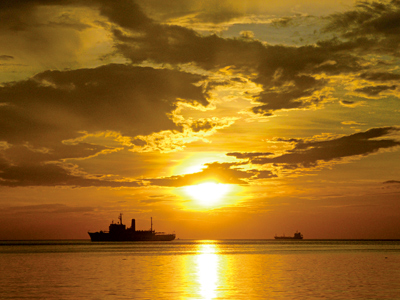 The region is known for its ferocious weather systems and hit the headlines in September 2009 when a typhoon caused severe flooding and thousands of people were evacuated to higher ground. All of this unrest would have been enough to make some expats pack their bags and head home, but Schumacher is optimistic about the city’s future.
“Manila is business-friendly in principle, and anyone looking to do business here should go with the flow and work around the red tape and bureaucracy,” he says. “People are friendly and easy to deal with.”
Richard Barclay, president of the Australian-New Zealand Chamber of Commerce of the Philippines, agrees. “Most sectors of the business community are easily approachable,” he says, adding that the professional time he has spent in Manila has been “the most challenging and satisfying” he has experienced. “I have always believed in the Philippines, despite frustrations from time to time,” Barclay says. “Patience is a virtue.”
The region is known for its ferocious weather systems and hit the headlines in September 2009 when a typhoon caused severe flooding and thousands of people were evacuated to higher ground. All of this unrest would have been enough to make some expats pack their bags and head home, but Schumacher is optimistic about the city’s future.
“Manila is business-friendly in principle, and anyone looking to do business here should go with the flow and work around the red tape and bureaucracy,” he says. “People are friendly and easy to deal with.”
Richard Barclay, president of the Australian-New Zealand Chamber of Commerce of the Philippines, agrees. “Most sectors of the business community are easily approachable,” he says, adding that the professional time he has spent in Manila has been “the most challenging and satisfying” he has experienced. “I have always believed in the Philippines, despite frustrations from time to time,” Barclay says. “Patience is a virtue.”
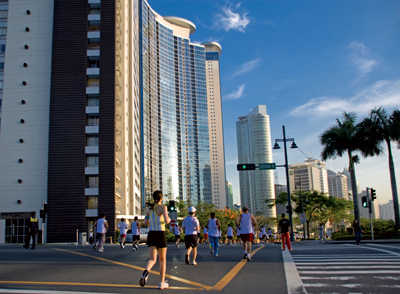 The test of patience begins on arrival at Manila Ninoy Aquino International Airport. Opened in 1981, the facilities have not aged well and the third and largest terminal, which was supposed to open in 2002, is yet to be fully operational, saddled by technical problems and legal battles. Consequently, travellers may not get the best first impression – and then they have to get into town.
Nearly 12 million Filipinos live in the capital city and the traffic can be bad, aggravated by old roads and erratic enforcement of traffic regulations. There is a metro system with three lines, but air-conditioned buses, taxis and mini-vans are probably the best way to get to meetings. The streets are filled with flamboyantly decorated jeepneys (refurbished Second World War military jeeps), which are the most popular means of transport for the masses, and attempts to restrict them to arterial roads have failed. Further down the hierarchy is the tricycle (a motorcycle with a sidecar), which is a good option for short distances.
“Public transport is medieval,” remarks Schumacher, not entirely in jest. Still, a bumpy jeepney or tricycle ride is an experience you shouldn’t miss.
The Philippines has not escaped the effects of the worldwide recession, with economic growth slowing to 4.6 percent in 2008 and 0.4 percent in the first three months of 2009. Standard Chartered Bank originally forecast 0.7 percent growth for the whole of 2009, but raised it to 1.7 percent, while Asian Development Bank’s projection is 2.5 percent. Both are lower than the government’s growth target of 3.7-4.4 percent.
However, Edgardo G Lacson, president of the Philippine Chamber of Commerce and Industry (PCCI), describes the recession as having had a “mild effect” on the economy. He says: “Immediately after the meltdown, many companies pulled out of the stock market, registering a US$0.5 billion drop last year in foreign exchange, but over the past two months, US$300 million came in. Confidence is coming back.”
He adds that the 50 percent contraction in exports (mainly electronics) was offset by other factors, such as a rise in remittances from overseas-based Filipino workers, also known as OFWs. Lacson also credits the stable banking system. “After the 1997 Asian (financial crisis), we were more cautious and stayed away from products such as derivatives,” he says.
The test of patience begins on arrival at Manila Ninoy Aquino International Airport. Opened in 1981, the facilities have not aged well and the third and largest terminal, which was supposed to open in 2002, is yet to be fully operational, saddled by technical problems and legal battles. Consequently, travellers may not get the best first impression – and then they have to get into town.
Nearly 12 million Filipinos live in the capital city and the traffic can be bad, aggravated by old roads and erratic enforcement of traffic regulations. There is a metro system with three lines, but air-conditioned buses, taxis and mini-vans are probably the best way to get to meetings. The streets are filled with flamboyantly decorated jeepneys (refurbished Second World War military jeeps), which are the most popular means of transport for the masses, and attempts to restrict them to arterial roads have failed. Further down the hierarchy is the tricycle (a motorcycle with a sidecar), which is a good option for short distances.
“Public transport is medieval,” remarks Schumacher, not entirely in jest. Still, a bumpy jeepney or tricycle ride is an experience you shouldn’t miss.
The Philippines has not escaped the effects of the worldwide recession, with economic growth slowing to 4.6 percent in 2008 and 0.4 percent in the first three months of 2009. Standard Chartered Bank originally forecast 0.7 percent growth for the whole of 2009, but raised it to 1.7 percent, while Asian Development Bank’s projection is 2.5 percent. Both are lower than the government’s growth target of 3.7-4.4 percent.
However, Edgardo G Lacson, president of the Philippine Chamber of Commerce and Industry (PCCI), describes the recession as having had a “mild effect” on the economy. He says: “Immediately after the meltdown, many companies pulled out of the stock market, registering a US$0.5 billion drop last year in foreign exchange, but over the past two months, US$300 million came in. Confidence is coming back.”
He adds that the 50 percent contraction in exports (mainly electronics) was offset by other factors, such as a rise in remittances from overseas-based Filipino workers, also known as OFWs. Lacson also credits the stable banking system. “After the 1997 Asian (financial crisis), we were more cautious and stayed away from products such as derivatives,” he says.
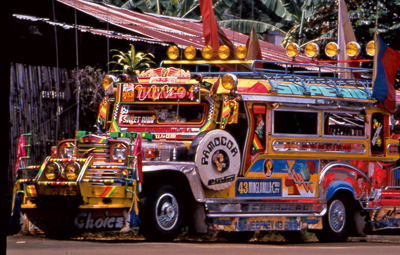 The main factor for the buoyant economy is the strong performance of Manila’s key industry, the service sector, covering hotels, food and beverage outlets and financial houses. The outsourcing of call-centre staff by foreign companies – known as business process outsourcing (BPO) – is also growing fast, and has gone from a 2,400-strong workforce at the start of the decade to being the key driver of the economy, with more than half a million employees and revenues exceeding US$6 billion last year. Growth is projected at 10 to 15 percent over the next couple of years, which could see the Philippines edging out India as the world’s premier BPO destination.
Roger Stone, deputy chairman of IPVG Corp, which deals with telecoms, IT and BPO, says: “Manila is underrated as a place to do business. It might not compare favourably with Singapore, for example, in terms of the ease with which businesses can be set up and licences obtained, but when viewed from the perspective of price, in my view Manila is the undiscovered gem of Asia.”
The main factor for the buoyant economy is the strong performance of Manila’s key industry, the service sector, covering hotels, food and beverage outlets and financial houses. The outsourcing of call-centre staff by foreign companies – known as business process outsourcing (BPO) – is also growing fast, and has gone from a 2,400-strong workforce at the start of the decade to being the key driver of the economy, with more than half a million employees and revenues exceeding US$6 billion last year. Growth is projected at 10 to 15 percent over the next couple of years, which could see the Philippines edging out India as the world’s premier BPO destination.
Roger Stone, deputy chairman of IPVG Corp, which deals with telecoms, IT and BPO, says: “Manila is underrated as a place to do business. It might not compare favourably with Singapore, for example, in terms of the ease with which businesses can be set up and licences obtained, but when viewed from the perspective of price, in my view Manila is the undiscovered gem of Asia.”
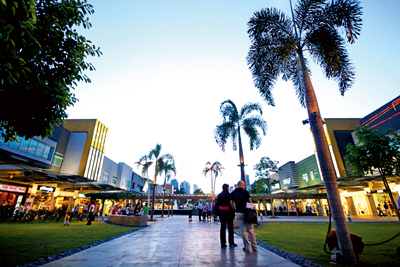 The success of the BPO industry and related areas is changing the landscape of Manila’s central business district (CBD). Over the past decade, restaurants, bars, promenades and convenience stores, catering mainly to young professionals, have multiplied. Lacson of PCCI says: “Ayala Avenue (Manila’s Wall Street) in Makati used to be dead after 5pm, but now it has a night life.” Daytime workers waiting for traffic to ease, and night-shift call-centre staff relaxing before reporting for work, keep the area alive until the nighthawks take over.
BPOs are also boosting the demand for office space, especially with the entry of “captives,” or global firms undertaking their own BPO functions, according to a study by Jones Lang LaSalle Leechiu (JLLL), a global services firm focused on real estate. Captives are expected to operate in Metro Manila, currently host to 80 percent of BPO sites nationwide, says David Leechiu, JLLL country head.
The success of the BPO industry and related areas is changing the landscape of Manila’s central business district (CBD). Over the past decade, restaurants, bars, promenades and convenience stores, catering mainly to young professionals, have multiplied. Lacson of PCCI says: “Ayala Avenue (Manila’s Wall Street) in Makati used to be dead after 5pm, but now it has a night life.” Daytime workers waiting for traffic to ease, and night-shift call-centre staff relaxing before reporting for work, keep the area alive until the nighthawks take over.
BPOs are also boosting the demand for office space, especially with the entry of “captives,” or global firms undertaking their own BPO functions, according to a study by Jones Lang LaSalle Leechiu (JLLL), a global services firm focused on real estate. Captives are expected to operate in Metro Manila, currently host to 80 percent of BPO sites nationwide, says David Leechiu, JLLL country head.
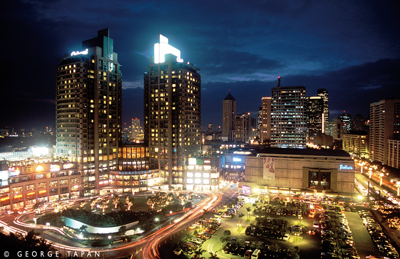 Most business travellers will head to Makati City, which is about 30 minutes (sans traffic) from the airport and 15 minutes from the capital. The area is home to the Glorietta and Greenbelt malls, as well as Ayala Museum. It is also where many head offices are located, particularly on Ayala Avenue. Here you’ll find The Peninsula Manila and Makati Shangri-La hotels, which face each other on the corner of Ayala and Makati Avenues, and the Mandarin Oriental a block away. Other popular hotels are the New World Hotel Makati City, the newly renovated Dusit Thani and InterContinental Manila. A growing number of serviced apartments are also springing up, such as Somerset Olympia, Somerset Salcedo and Somerset Legaspi and Ascott Makati, beside Glorietta mall.
A second business district is Ortigas Center, 15 minutes away in the eastern section of the metropolis. The Ortigas CBD is home to the head office of the Philippine Stock Exchange, the Edsa Shangri-La hotel, Crowne Plaza and the Holiday Inn Galleria Manila. It’s here you will also find the newly opened Oakwood Premier Joy~Nostalg Center Manila, with 233 fully furnished luxury apartments and offices, located opposite the Asian Development Bank headquarters. A joint venture between Oakwood Asia-Pacific, a global serviced apartment provider, and Quantuvis Resources Corp, the building is touted as the first in the country to use “energy-efficient glass curtain walls”.
The rocky economic climate has not put off hotel openings, with the Manila Marriott Hotel launched in October last year. The property is situated in the new US$700-million Resorts World Manila complex which faces the newest airport terminal and features the country’s largest casino. Opening this year is the Fairmont Makati, near the Philippine Stock Exchange. It will have 300 rooms and suites and a wide range of meeting spaces. In addition, construction is underway on the 30-suite Raffles Hotel and 236-unit Raffles Residences, across the Greenbelt mall right in the heart of the Makati CBD. It is expected to be completed next year.
Next to Makati is Bonifacio Global City, an emerging district in Taguig City, where huge developments are shooting up such as chic residential apartments, headquarters of global corporations, malls and international schools. Recently, the St Luke’s Medical Center opened, with a 14-storey main building housing state-of-the-art equipment and 629 patient rooms, and an 11-storey facility for 400 doctors’ clinics.
In Quezon City, north of the metropolis, a new Ayala Center will rise beside Trinoma Mall (Triangle in Northern Metro Manila). This mixed-use CBD will have space for commercial activity and residential developments, and Lacson says a central metro station will open here before the end of this year. The PCCI is monitoring 149 infrastructure projects all over the country (mostly on Luzon, the largest of the Philippines’ 7,100 islands and where Manila is located) and these include domestic airports, sea ports and bridges.
If your business is taking you right into the capital, Manila has several hotels along Roxas Boulevard, which has a great view of the bay. These include Manila Hotel, one of the oldest luxury properties in the country, which introduces this year its fully renovated guestrooms, and Hotel Sofitel Philippine Plaza. The latter is set within the Cultural Center of the Philippines complex, where you’ll also find the Philippine International Convention Center, built in 1976 for the annual International Monetary Fund and World Bank Group meeting, the first to be held in Southeast Asia. To host the delegates, a dozen four- and five-star hotels were constructed along the boulevard, and some in adjacent Pasay City and Makati. Among these are Sofitel (formerly a Westin property), the Traders Hotel Manila (formerly Holiday Inn) and the Hyatt Hotel and Casino Manila.
With at least eight other convention sites, all equipped with world-class business facilities, Manila is emerging as a meeting and conference destination. And it’s certainly easy on the wallet. According to a survey by Swiss bank UBS in 2009, it is one of the world’s cheapest cities. A three-course meal in a good restaurant costs about US$17, and you’ll find a wide range of eateries.
Manila also has some of the world’s largest malls, where Filipino creativity and craftsmanship hold their own against international brands. Wander the streets and you’ll come across cosy cafés, trendy bars and theatres. A useful guide is www.clickthecity.com, which lists restaurants, bars, hotels, shops and even churches in the city, as well as updated information about cinemas, exhibitions and events.
If you have spare time between meetings, head for Intramuros, the walled city within a city built by Spanish conquistadors in the late 1500s, and take a look at architectural treasures such as the Manila Cathedral and San Agustin Church.
On weekends, Schumacher recommends driving to the beaches in the nearby provinces of Batangas or Cavite two hours away, or flying to the islands – Boracay in central Philippines is his favourite. He says living in the country has taught him to enjoy life and not worry too much, observing that Filipinos know how to have a good time in spite of the challenges that come their way. “It’s been more than 30 years, and I’m still here,” he says.
Most business travellers will head to Makati City, which is about 30 minutes (sans traffic) from the airport and 15 minutes from the capital. The area is home to the Glorietta and Greenbelt malls, as well as Ayala Museum. It is also where many head offices are located, particularly on Ayala Avenue. Here you’ll find The Peninsula Manila and Makati Shangri-La hotels, which face each other on the corner of Ayala and Makati Avenues, and the Mandarin Oriental a block away. Other popular hotels are the New World Hotel Makati City, the newly renovated Dusit Thani and InterContinental Manila. A growing number of serviced apartments are also springing up, such as Somerset Olympia, Somerset Salcedo and Somerset Legaspi and Ascott Makati, beside Glorietta mall.
A second business district is Ortigas Center, 15 minutes away in the eastern section of the metropolis. The Ortigas CBD is home to the head office of the Philippine Stock Exchange, the Edsa Shangri-La hotel, Crowne Plaza and the Holiday Inn Galleria Manila. It’s here you will also find the newly opened Oakwood Premier Joy~Nostalg Center Manila, with 233 fully furnished luxury apartments and offices, located opposite the Asian Development Bank headquarters. A joint venture between Oakwood Asia-Pacific, a global serviced apartment provider, and Quantuvis Resources Corp, the building is touted as the first in the country to use “energy-efficient glass curtain walls”.
The rocky economic climate has not put off hotel openings, with the Manila Marriott Hotel launched in October last year. The property is situated in the new US$700-million Resorts World Manila complex which faces the newest airport terminal and features the country’s largest casino. Opening this year is the Fairmont Makati, near the Philippine Stock Exchange. It will have 300 rooms and suites and a wide range of meeting spaces. In addition, construction is underway on the 30-suite Raffles Hotel and 236-unit Raffles Residences, across the Greenbelt mall right in the heart of the Makati CBD. It is expected to be completed next year.
Next to Makati is Bonifacio Global City, an emerging district in Taguig City, where huge developments are shooting up such as chic residential apartments, headquarters of global corporations, malls and international schools. Recently, the St Luke’s Medical Center opened, with a 14-storey main building housing state-of-the-art equipment and 629 patient rooms, and an 11-storey facility for 400 doctors’ clinics.
In Quezon City, north of the metropolis, a new Ayala Center will rise beside Trinoma Mall (Triangle in Northern Metro Manila). This mixed-use CBD will have space for commercial activity and residential developments, and Lacson says a central metro station will open here before the end of this year. The PCCI is monitoring 149 infrastructure projects all over the country (mostly on Luzon, the largest of the Philippines’ 7,100 islands and where Manila is located) and these include domestic airports, sea ports and bridges.
If your business is taking you right into the capital, Manila has several hotels along Roxas Boulevard, which has a great view of the bay. These include Manila Hotel, one of the oldest luxury properties in the country, which introduces this year its fully renovated guestrooms, and Hotel Sofitel Philippine Plaza. The latter is set within the Cultural Center of the Philippines complex, where you’ll also find the Philippine International Convention Center, built in 1976 for the annual International Monetary Fund and World Bank Group meeting, the first to be held in Southeast Asia. To host the delegates, a dozen four- and five-star hotels were constructed along the boulevard, and some in adjacent Pasay City and Makati. Among these are Sofitel (formerly a Westin property), the Traders Hotel Manila (formerly Holiday Inn) and the Hyatt Hotel and Casino Manila.
With at least eight other convention sites, all equipped with world-class business facilities, Manila is emerging as a meeting and conference destination. And it’s certainly easy on the wallet. According to a survey by Swiss bank UBS in 2009, it is one of the world’s cheapest cities. A three-course meal in a good restaurant costs about US$17, and you’ll find a wide range of eateries.
Manila also has some of the world’s largest malls, where Filipino creativity and craftsmanship hold their own against international brands. Wander the streets and you’ll come across cosy cafés, trendy bars and theatres. A useful guide is www.clickthecity.com, which lists restaurants, bars, hotels, shops and even churches in the city, as well as updated information about cinemas, exhibitions and events.
If you have spare time between meetings, head for Intramuros, the walled city within a city built by Spanish conquistadors in the late 1500s, and take a look at architectural treasures such as the Manila Cathedral and San Agustin Church.
On weekends, Schumacher recommends driving to the beaches in the nearby provinces of Batangas or Cavite two hours away, or flying to the islands – Boracay in central Philippines is his favourite. He says living in the country has taught him to enjoy life and not worry too much, observing that Filipinos know how to have a good time in spite of the challenges that come their way. “It’s been more than 30 years, and I’m still here,” he says.
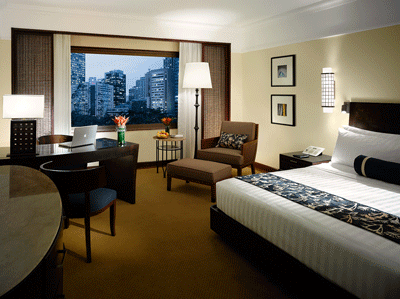 This historic luxury hotel on the corner of Ayala and Makati Avenues in Makati City has 497 bedrooms, many of which are newly renovated. Club Premier Suites offer guests free wired and wireless internet, use of computer workstations in the Club Lounge, and access to meeting rooms. There is also a fitness centre and pool, and a spa offering Swedish, shiatsu and traditional Filipino massages.
CONTACT: 1, 226 Makati City, tel 63 2 887 2888,
www.peninsula.com
This historic luxury hotel on the corner of Ayala and Makati Avenues in Makati City has 497 bedrooms, many of which are newly renovated. Club Premier Suites offer guests free wired and wireless internet, use of computer workstations in the Club Lounge, and access to meeting rooms. There is also a fitness centre and pool, and a spa offering Swedish, shiatsu and traditional Filipino massages.
CONTACT: 1, 226 Makati City, tel 63 2 887 2888,
www.peninsula.com
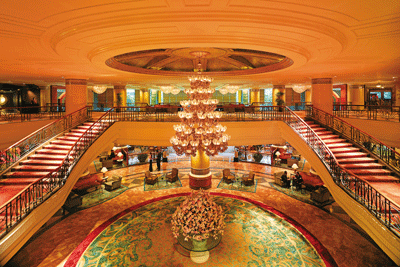 Also located on the corner of Ayala and Makati Avenues, the Shangri-La has 699 rooms, along with four international restaurants and private lounges. It offers all guests free broadband internet and access to a 24-hour gym and business centre. Horizon Club Rooms on levels 22 to 25 provide customers with entry to the Club lounge, as well as a personal fax machine, executive desk, and a platter of fresh fruit and an international paper delivered daily to the bedroom.
CONTACT: Ayala Avenue corner Makati Avenue,
tel 63 2 813 8888,
www.shangri-la.com
Also located on the corner of Ayala and Makati Avenues, the Shangri-La has 699 rooms, along with four international restaurants and private lounges. It offers all guests free broadband internet and access to a 24-hour gym and business centre. Horizon Club Rooms on levels 22 to 25 provide customers with entry to the Club lounge, as well as a personal fax machine, executive desk, and a platter of fresh fruit and an international paper delivered daily to the bedroom.
CONTACT: Ayala Avenue corner Makati Avenue,
tel 63 2 813 8888,
www.shangri-la.com
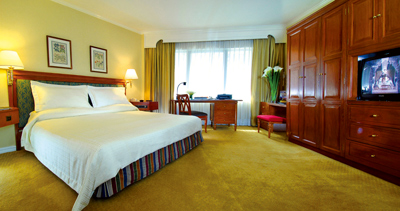 The Mandarin Oriental is in a quieter corner of Makati. A favourite with business travellers, all rooms have high-speed internet access, and Mandarin Suites have Bose sound systems. Deluxe and Executive Corner Rooms are newly renovated, while the Business Rooms on floors four to seven have free internet and easy access to the 24-hour business centre. Paseo Uno restaurant has open kitchens serving Asian and Western specialities, while Tin Hau dishes up authentic Chinese cuisine in a cosy setting.
CONTACT: Makati Avenue,
tel 63 2 750 8888,
www.mandarinoriental.com/manila
The Mandarin Oriental is in a quieter corner of Makati. A favourite with business travellers, all rooms have high-speed internet access, and Mandarin Suites have Bose sound systems. Deluxe and Executive Corner Rooms are newly renovated, while the Business Rooms on floors four to seven have free internet and easy access to the 24-hour business centre. Paseo Uno restaurant has open kitchens serving Asian and Western specialities, while Tin Hau dishes up authentic Chinese cuisine in a cosy setting.
CONTACT: Makati Avenue,
tel 63 2 750 8888,
www.mandarinoriental.com/manila
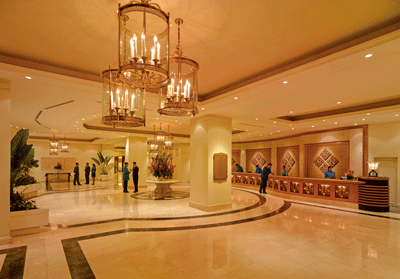 The EDSA Shangri-La is located in Ortigas Center, adjacent to primary business and shopping areas. Its 632 guestrooms and suites have free broadband internet access, while Horizon Club benefits include private check-in and check-out and full use of the lounge. As well as four international restaurants and several private lounges, it has a business centre providing secretarial and courier services. Recreational facilities include a gym and spa, an outdoor pool, yoga and aerobics studios, jogging paths and tennis courts.
CONTACT: 1 Garden Way, Ortigas Center, tel 63 2 633 8888, www.shangri-la.com
The EDSA Shangri-La is located in Ortigas Center, adjacent to primary business and shopping areas. Its 632 guestrooms and suites have free broadband internet access, while Horizon Club benefits include private check-in and check-out and full use of the lounge. As well as four international restaurants and several private lounges, it has a business centre providing secretarial and courier services. Recreational facilities include a gym and spa, an outdoor pool, yoga and aerobics studios, jogging paths and tennis courts.
CONTACT: 1 Garden Way, Ortigas Center, tel 63 2 633 8888, www.shangri-la.com
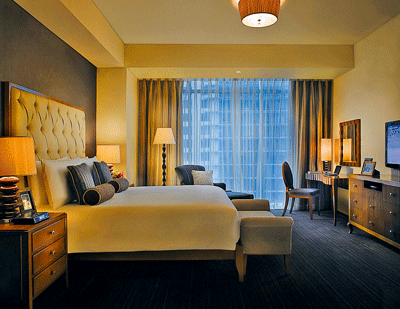 This recently opened Oakwood Premier property is located within the Ortigas Center and features 233 serviced apartments with a choice of studios, one, two and three bedrooms. All apartments are furnished with king-size beds, marble bathrooms, 40-inch high-definition TVs with surround-sound speakers, IDD phones with voice mail, electronic safes and broadband internet. There is a restaurant and bar, an indoor pool with Jacuzzi, fitness centre, business centre with videoconferencing facilities, banquet and conference space and Wi-Fi in public areas of the property. Outside, Ortigas bustles with business activities by day and turns into a dining and entertainment area by night.
CONTACT: 17 ADB Avenue, Ortigas Center, tel 63 2 637 7888, www.oakwood.com
This recently opened Oakwood Premier property is located within the Ortigas Center and features 233 serviced apartments with a choice of studios, one, two and three bedrooms. All apartments are furnished with king-size beds, marble bathrooms, 40-inch high-definition TVs with surround-sound speakers, IDD phones with voice mail, electronic safes and broadband internet. There is a restaurant and bar, an indoor pool with Jacuzzi, fitness centre, business centre with videoconferencing facilities, banquet and conference space and Wi-Fi in public areas of the property. Outside, Ortigas bustles with business activities by day and turns into a dining and entertainment area by night.
CONTACT: 17 ADB Avenue, Ortigas Center, tel 63 2 637 7888, www.oakwood.com
 The region is known for its ferocious weather systems and hit the headlines in September 2009 when a typhoon caused severe flooding and thousands of people were evacuated to higher ground. All of this unrest would have been enough to make some expats pack their bags and head home, but Schumacher is optimistic about the city’s future.
“Manila is business-friendly in principle, and anyone looking to do business here should go with the flow and work around the red tape and bureaucracy,” he says. “People are friendly and easy to deal with.”
Richard Barclay, president of the Australian-New Zealand Chamber of Commerce of the Philippines, agrees. “Most sectors of the business community are easily approachable,” he says, adding that the professional time he has spent in Manila has been “the most challenging and satisfying” he has experienced. “I have always believed in the Philippines, despite frustrations from time to time,” Barclay says. “Patience is a virtue.”
The region is known for its ferocious weather systems and hit the headlines in September 2009 when a typhoon caused severe flooding and thousands of people were evacuated to higher ground. All of this unrest would have been enough to make some expats pack their bags and head home, but Schumacher is optimistic about the city’s future.
“Manila is business-friendly in principle, and anyone looking to do business here should go with the flow and work around the red tape and bureaucracy,” he says. “People are friendly and easy to deal with.”
Richard Barclay, president of the Australian-New Zealand Chamber of Commerce of the Philippines, agrees. “Most sectors of the business community are easily approachable,” he says, adding that the professional time he has spent in Manila has been “the most challenging and satisfying” he has experienced. “I have always believed in the Philippines, despite frustrations from time to time,” Barclay says. “Patience is a virtue.”
 The test of patience begins on arrival at Manila Ninoy Aquino International Airport. Opened in 1981, the facilities have not aged well and the third and largest terminal, which was supposed to open in 2002, is yet to be fully operational, saddled by technical problems and legal battles. Consequently, travellers may not get the best first impression – and then they have to get into town.
Nearly 12 million Filipinos live in the capital city and the traffic can be bad, aggravated by old roads and erratic enforcement of traffic regulations. There is a metro system with three lines, but air-conditioned buses, taxis and mini-vans are probably the best way to get to meetings. The streets are filled with flamboyantly decorated jeepneys (refurbished Second World War military jeeps), which are the most popular means of transport for the masses, and attempts to restrict them to arterial roads have failed. Further down the hierarchy is the tricycle (a motorcycle with a sidecar), which is a good option for short distances.
“Public transport is medieval,” remarks Schumacher, not entirely in jest. Still, a bumpy jeepney or tricycle ride is an experience you shouldn’t miss.
The Philippines has not escaped the effects of the worldwide recession, with economic growth slowing to 4.6 percent in 2008 and 0.4 percent in the first three months of 2009. Standard Chartered Bank originally forecast 0.7 percent growth for the whole of 2009, but raised it to 1.7 percent, while Asian Development Bank’s projection is 2.5 percent. Both are lower than the government’s growth target of 3.7-4.4 percent.
However, Edgardo G Lacson, president of the Philippine Chamber of Commerce and Industry (PCCI), describes the recession as having had a “mild effect” on the economy. He says: “Immediately after the meltdown, many companies pulled out of the stock market, registering a US$0.5 billion drop last year in foreign exchange, but over the past two months, US$300 million came in. Confidence is coming back.”
He adds that the 50 percent contraction in exports (mainly electronics) was offset by other factors, such as a rise in remittances from overseas-based Filipino workers, also known as OFWs. Lacson also credits the stable banking system. “After the 1997 Asian (financial crisis), we were more cautious and stayed away from products such as derivatives,” he says.
The test of patience begins on arrival at Manila Ninoy Aquino International Airport. Opened in 1981, the facilities have not aged well and the third and largest terminal, which was supposed to open in 2002, is yet to be fully operational, saddled by technical problems and legal battles. Consequently, travellers may not get the best first impression – and then they have to get into town.
Nearly 12 million Filipinos live in the capital city and the traffic can be bad, aggravated by old roads and erratic enforcement of traffic regulations. There is a metro system with three lines, but air-conditioned buses, taxis and mini-vans are probably the best way to get to meetings. The streets are filled with flamboyantly decorated jeepneys (refurbished Second World War military jeeps), which are the most popular means of transport for the masses, and attempts to restrict them to arterial roads have failed. Further down the hierarchy is the tricycle (a motorcycle with a sidecar), which is a good option for short distances.
“Public transport is medieval,” remarks Schumacher, not entirely in jest. Still, a bumpy jeepney or tricycle ride is an experience you shouldn’t miss.
The Philippines has not escaped the effects of the worldwide recession, with economic growth slowing to 4.6 percent in 2008 and 0.4 percent in the first three months of 2009. Standard Chartered Bank originally forecast 0.7 percent growth for the whole of 2009, but raised it to 1.7 percent, while Asian Development Bank’s projection is 2.5 percent. Both are lower than the government’s growth target of 3.7-4.4 percent.
However, Edgardo G Lacson, president of the Philippine Chamber of Commerce and Industry (PCCI), describes the recession as having had a “mild effect” on the economy. He says: “Immediately after the meltdown, many companies pulled out of the stock market, registering a US$0.5 billion drop last year in foreign exchange, but over the past two months, US$300 million came in. Confidence is coming back.”
He adds that the 50 percent contraction in exports (mainly electronics) was offset by other factors, such as a rise in remittances from overseas-based Filipino workers, also known as OFWs. Lacson also credits the stable banking system. “After the 1997 Asian (financial crisis), we were more cautious and stayed away from products such as derivatives,” he says.
 The main factor for the buoyant economy is the strong performance of Manila’s key industry, the service sector, covering hotels, food and beverage outlets and financial houses. The outsourcing of call-centre staff by foreign companies – known as business process outsourcing (BPO) – is also growing fast, and has gone from a 2,400-strong workforce at the start of the decade to being the key driver of the economy, with more than half a million employees and revenues exceeding US$6 billion last year. Growth is projected at 10 to 15 percent over the next couple of years, which could see the Philippines edging out India as the world’s premier BPO destination.
Roger Stone, deputy chairman of IPVG Corp, which deals with telecoms, IT and BPO, says: “Manila is underrated as a place to do business. It might not compare favourably with Singapore, for example, in terms of the ease with which businesses can be set up and licences obtained, but when viewed from the perspective of price, in my view Manila is the undiscovered gem of Asia.”
The main factor for the buoyant economy is the strong performance of Manila’s key industry, the service sector, covering hotels, food and beverage outlets and financial houses. The outsourcing of call-centre staff by foreign companies – known as business process outsourcing (BPO) – is also growing fast, and has gone from a 2,400-strong workforce at the start of the decade to being the key driver of the economy, with more than half a million employees and revenues exceeding US$6 billion last year. Growth is projected at 10 to 15 percent over the next couple of years, which could see the Philippines edging out India as the world’s premier BPO destination.
Roger Stone, deputy chairman of IPVG Corp, which deals with telecoms, IT and BPO, says: “Manila is underrated as a place to do business. It might not compare favourably with Singapore, for example, in terms of the ease with which businesses can be set up and licences obtained, but when viewed from the perspective of price, in my view Manila is the undiscovered gem of Asia.”
 The success of the BPO industry and related areas is changing the landscape of Manila’s central business district (CBD). Over the past decade, restaurants, bars, promenades and convenience stores, catering mainly to young professionals, have multiplied. Lacson of PCCI says: “Ayala Avenue (Manila’s Wall Street) in Makati used to be dead after 5pm, but now it has a night life.” Daytime workers waiting for traffic to ease, and night-shift call-centre staff relaxing before reporting for work, keep the area alive until the nighthawks take over.
BPOs are also boosting the demand for office space, especially with the entry of “captives,” or global firms undertaking their own BPO functions, according to a study by Jones Lang LaSalle Leechiu (JLLL), a global services firm focused on real estate. Captives are expected to operate in Metro Manila, currently host to 80 percent of BPO sites nationwide, says David Leechiu, JLLL country head.
The success of the BPO industry and related areas is changing the landscape of Manila’s central business district (CBD). Over the past decade, restaurants, bars, promenades and convenience stores, catering mainly to young professionals, have multiplied. Lacson of PCCI says: “Ayala Avenue (Manila’s Wall Street) in Makati used to be dead after 5pm, but now it has a night life.” Daytime workers waiting for traffic to ease, and night-shift call-centre staff relaxing before reporting for work, keep the area alive until the nighthawks take over.
BPOs are also boosting the demand for office space, especially with the entry of “captives,” or global firms undertaking their own BPO functions, according to a study by Jones Lang LaSalle Leechiu (JLLL), a global services firm focused on real estate. Captives are expected to operate in Metro Manila, currently host to 80 percent of BPO sites nationwide, says David Leechiu, JLLL country head.
 Most business travellers will head to Makati City, which is about 30 minutes (sans traffic) from the airport and 15 minutes from the capital. The area is home to the Glorietta and Greenbelt malls, as well as Ayala Museum. It is also where many head offices are located, particularly on Ayala Avenue. Here you’ll find The Peninsula Manila and Makati Shangri-La hotels, which face each other on the corner of Ayala and Makati Avenues, and the Mandarin Oriental a block away. Other popular hotels are the New World Hotel Makati City, the newly renovated Dusit Thani and InterContinental Manila. A growing number of serviced apartments are also springing up, such as Somerset Olympia, Somerset Salcedo and Somerset Legaspi and Ascott Makati, beside Glorietta mall.
A second business district is Ortigas Center, 15 minutes away in the eastern section of the metropolis. The Ortigas CBD is home to the head office of the Philippine Stock Exchange, the Edsa Shangri-La hotel, Crowne Plaza and the Holiday Inn Galleria Manila. It’s here you will also find the newly opened Oakwood Premier Joy~Nostalg Center Manila, with 233 fully furnished luxury apartments and offices, located opposite the Asian Development Bank headquarters. A joint venture between Oakwood Asia-Pacific, a global serviced apartment provider, and Quantuvis Resources Corp, the building is touted as the first in the country to use “energy-efficient glass curtain walls”.
The rocky economic climate has not put off hotel openings, with the Manila Marriott Hotel launched in October last year. The property is situated in the new US$700-million Resorts World Manila complex which faces the newest airport terminal and features the country’s largest casino. Opening this year is the Fairmont Makati, near the Philippine Stock Exchange. It will have 300 rooms and suites and a wide range of meeting spaces. In addition, construction is underway on the 30-suite Raffles Hotel and 236-unit Raffles Residences, across the Greenbelt mall right in the heart of the Makati CBD. It is expected to be completed next year.
Next to Makati is Bonifacio Global City, an emerging district in Taguig City, where huge developments are shooting up such as chic residential apartments, headquarters of global corporations, malls and international schools. Recently, the St Luke’s Medical Center opened, with a 14-storey main building housing state-of-the-art equipment and 629 patient rooms, and an 11-storey facility for 400 doctors’ clinics.
In Quezon City, north of the metropolis, a new Ayala Center will rise beside Trinoma Mall (Triangle in Northern Metro Manila). This mixed-use CBD will have space for commercial activity and residential developments, and Lacson says a central metro station will open here before the end of this year. The PCCI is monitoring 149 infrastructure projects all over the country (mostly on Luzon, the largest of the Philippines’ 7,100 islands and where Manila is located) and these include domestic airports, sea ports and bridges.
If your business is taking you right into the capital, Manila has several hotels along Roxas Boulevard, which has a great view of the bay. These include Manila Hotel, one of the oldest luxury properties in the country, which introduces this year its fully renovated guestrooms, and Hotel Sofitel Philippine Plaza. The latter is set within the Cultural Center of the Philippines complex, where you’ll also find the Philippine International Convention Center, built in 1976 for the annual International Monetary Fund and World Bank Group meeting, the first to be held in Southeast Asia. To host the delegates, a dozen four- and five-star hotels were constructed along the boulevard, and some in adjacent Pasay City and Makati. Among these are Sofitel (formerly a Westin property), the Traders Hotel Manila (formerly Holiday Inn) and the Hyatt Hotel and Casino Manila.
With at least eight other convention sites, all equipped with world-class business facilities, Manila is emerging as a meeting and conference destination. And it’s certainly easy on the wallet. According to a survey by Swiss bank UBS in 2009, it is one of the world’s cheapest cities. A three-course meal in a good restaurant costs about US$17, and you’ll find a wide range of eateries.
Manila also has some of the world’s largest malls, where Filipino creativity and craftsmanship hold their own against international brands. Wander the streets and you’ll come across cosy cafés, trendy bars and theatres. A useful guide is www.clickthecity.com, which lists restaurants, bars, hotels, shops and even churches in the city, as well as updated information about cinemas, exhibitions and events.
If you have spare time between meetings, head for Intramuros, the walled city within a city built by Spanish conquistadors in the late 1500s, and take a look at architectural treasures such as the Manila Cathedral and San Agustin Church.
On weekends, Schumacher recommends driving to the beaches in the nearby provinces of Batangas or Cavite two hours away, or flying to the islands – Boracay in central Philippines is his favourite. He says living in the country has taught him to enjoy life and not worry too much, observing that Filipinos know how to have a good time in spite of the challenges that come their way. “It’s been more than 30 years, and I’m still here,” he says.
Most business travellers will head to Makati City, which is about 30 minutes (sans traffic) from the airport and 15 minutes from the capital. The area is home to the Glorietta and Greenbelt malls, as well as Ayala Museum. It is also where many head offices are located, particularly on Ayala Avenue. Here you’ll find The Peninsula Manila and Makati Shangri-La hotels, which face each other on the corner of Ayala and Makati Avenues, and the Mandarin Oriental a block away. Other popular hotels are the New World Hotel Makati City, the newly renovated Dusit Thani and InterContinental Manila. A growing number of serviced apartments are also springing up, such as Somerset Olympia, Somerset Salcedo and Somerset Legaspi and Ascott Makati, beside Glorietta mall.
A second business district is Ortigas Center, 15 minutes away in the eastern section of the metropolis. The Ortigas CBD is home to the head office of the Philippine Stock Exchange, the Edsa Shangri-La hotel, Crowne Plaza and the Holiday Inn Galleria Manila. It’s here you will also find the newly opened Oakwood Premier Joy~Nostalg Center Manila, with 233 fully furnished luxury apartments and offices, located opposite the Asian Development Bank headquarters. A joint venture between Oakwood Asia-Pacific, a global serviced apartment provider, and Quantuvis Resources Corp, the building is touted as the first in the country to use “energy-efficient glass curtain walls”.
The rocky economic climate has not put off hotel openings, with the Manila Marriott Hotel launched in October last year. The property is situated in the new US$700-million Resorts World Manila complex which faces the newest airport terminal and features the country’s largest casino. Opening this year is the Fairmont Makati, near the Philippine Stock Exchange. It will have 300 rooms and suites and a wide range of meeting spaces. In addition, construction is underway on the 30-suite Raffles Hotel and 236-unit Raffles Residences, across the Greenbelt mall right in the heart of the Makati CBD. It is expected to be completed next year.
Next to Makati is Bonifacio Global City, an emerging district in Taguig City, where huge developments are shooting up such as chic residential apartments, headquarters of global corporations, malls and international schools. Recently, the St Luke’s Medical Center opened, with a 14-storey main building housing state-of-the-art equipment and 629 patient rooms, and an 11-storey facility for 400 doctors’ clinics.
In Quezon City, north of the metropolis, a new Ayala Center will rise beside Trinoma Mall (Triangle in Northern Metro Manila). This mixed-use CBD will have space for commercial activity and residential developments, and Lacson says a central metro station will open here before the end of this year. The PCCI is monitoring 149 infrastructure projects all over the country (mostly on Luzon, the largest of the Philippines’ 7,100 islands and where Manila is located) and these include domestic airports, sea ports and bridges.
If your business is taking you right into the capital, Manila has several hotels along Roxas Boulevard, which has a great view of the bay. These include Manila Hotel, one of the oldest luxury properties in the country, which introduces this year its fully renovated guestrooms, and Hotel Sofitel Philippine Plaza. The latter is set within the Cultural Center of the Philippines complex, where you’ll also find the Philippine International Convention Center, built in 1976 for the annual International Monetary Fund and World Bank Group meeting, the first to be held in Southeast Asia. To host the delegates, a dozen four- and five-star hotels were constructed along the boulevard, and some in adjacent Pasay City and Makati. Among these are Sofitel (formerly a Westin property), the Traders Hotel Manila (formerly Holiday Inn) and the Hyatt Hotel and Casino Manila.
With at least eight other convention sites, all equipped with world-class business facilities, Manila is emerging as a meeting and conference destination. And it’s certainly easy on the wallet. According to a survey by Swiss bank UBS in 2009, it is one of the world’s cheapest cities. A three-course meal in a good restaurant costs about US$17, and you’ll find a wide range of eateries.
Manila also has some of the world’s largest malls, where Filipino creativity and craftsmanship hold their own against international brands. Wander the streets and you’ll come across cosy cafés, trendy bars and theatres. A useful guide is www.clickthecity.com, which lists restaurants, bars, hotels, shops and even churches in the city, as well as updated information about cinemas, exhibitions and events.
If you have spare time between meetings, head for Intramuros, the walled city within a city built by Spanish conquistadors in the late 1500s, and take a look at architectural treasures such as the Manila Cathedral and San Agustin Church.
On weekends, Schumacher recommends driving to the beaches in the nearby provinces of Batangas or Cavite two hours away, or flying to the islands – Boracay in central Philippines is his favourite. He says living in the country has taught him to enjoy life and not worry too much, observing that Filipinos know how to have a good time in spite of the challenges that come their way. “It’s been more than 30 years, and I’m still here,” he says.
WHERE TO STAY
The Peninsula Manila
 This historic luxury hotel on the corner of Ayala and Makati Avenues in Makati City has 497 bedrooms, many of which are newly renovated. Club Premier Suites offer guests free wired and wireless internet, use of computer workstations in the Club Lounge, and access to meeting rooms. There is also a fitness centre and pool, and a spa offering Swedish, shiatsu and traditional Filipino massages.
CONTACT: 1, 226 Makati City, tel 63 2 887 2888,
www.peninsula.com
This historic luxury hotel on the corner of Ayala and Makati Avenues in Makati City has 497 bedrooms, many of which are newly renovated. Club Premier Suites offer guests free wired and wireless internet, use of computer workstations in the Club Lounge, and access to meeting rooms. There is also a fitness centre and pool, and a spa offering Swedish, shiatsu and traditional Filipino massages.
CONTACT: 1, 226 Makati City, tel 63 2 887 2888,
www.peninsula.com
Makati Shangri-La
 Also located on the corner of Ayala and Makati Avenues, the Shangri-La has 699 rooms, along with four international restaurants and private lounges. It offers all guests free broadband internet and access to a 24-hour gym and business centre. Horizon Club Rooms on levels 22 to 25 provide customers with entry to the Club lounge, as well as a personal fax machine, executive desk, and a platter of fresh fruit and an international paper delivered daily to the bedroom.
CONTACT: Ayala Avenue corner Makati Avenue,
tel 63 2 813 8888,
www.shangri-la.com
Also located on the corner of Ayala and Makati Avenues, the Shangri-La has 699 rooms, along with four international restaurants and private lounges. It offers all guests free broadband internet and access to a 24-hour gym and business centre. Horizon Club Rooms on levels 22 to 25 provide customers with entry to the Club lounge, as well as a personal fax machine, executive desk, and a platter of fresh fruit and an international paper delivered daily to the bedroom.
CONTACT: Ayala Avenue corner Makati Avenue,
tel 63 2 813 8888,
www.shangri-la.com
Mandarin Oriental
 The Mandarin Oriental is in a quieter corner of Makati. A favourite with business travellers, all rooms have high-speed internet access, and Mandarin Suites have Bose sound systems. Deluxe and Executive Corner Rooms are newly renovated, while the Business Rooms on floors four to seven have free internet and easy access to the 24-hour business centre. Paseo Uno restaurant has open kitchens serving Asian and Western specialities, while Tin Hau dishes up authentic Chinese cuisine in a cosy setting.
CONTACT: Makati Avenue,
tel 63 2 750 8888,
www.mandarinoriental.com/manila
The Mandarin Oriental is in a quieter corner of Makati. A favourite with business travellers, all rooms have high-speed internet access, and Mandarin Suites have Bose sound systems. Deluxe and Executive Corner Rooms are newly renovated, while the Business Rooms on floors four to seven have free internet and easy access to the 24-hour business centre. Paseo Uno restaurant has open kitchens serving Asian and Western specialities, while Tin Hau dishes up authentic Chinese cuisine in a cosy setting.
CONTACT: Makati Avenue,
tel 63 2 750 8888,
www.mandarinoriental.com/manila
EDSA Shangri-La Manila
 The EDSA Shangri-La is located in Ortigas Center, adjacent to primary business and shopping areas. Its 632 guestrooms and suites have free broadband internet access, while Horizon Club benefits include private check-in and check-out and full use of the lounge. As well as four international restaurants and several private lounges, it has a business centre providing secretarial and courier services. Recreational facilities include a gym and spa, an outdoor pool, yoga and aerobics studios, jogging paths and tennis courts.
CONTACT: 1 Garden Way, Ortigas Center, tel 63 2 633 8888, www.shangri-la.com
The EDSA Shangri-La is located in Ortigas Center, adjacent to primary business and shopping areas. Its 632 guestrooms and suites have free broadband internet access, while Horizon Club benefits include private check-in and check-out and full use of the lounge. As well as four international restaurants and several private lounges, it has a business centre providing secretarial and courier services. Recreational facilities include a gym and spa, an outdoor pool, yoga and aerobics studios, jogging paths and tennis courts.
CONTACT: 1 Garden Way, Ortigas Center, tel 63 2 633 8888, www.shangri-la.com
Oakwood Premier Joy~Nostalg Center Manila
 This recently opened Oakwood Premier property is located within the Ortigas Center and features 233 serviced apartments with a choice of studios, one, two and three bedrooms. All apartments are furnished with king-size beds, marble bathrooms, 40-inch high-definition TVs with surround-sound speakers, IDD phones with voice mail, electronic safes and broadband internet. There is a restaurant and bar, an indoor pool with Jacuzzi, fitness centre, business centre with videoconferencing facilities, banquet and conference space and Wi-Fi in public areas of the property. Outside, Ortigas bustles with business activities by day and turns into a dining and entertainment area by night.
CONTACT: 17 ADB Avenue, Ortigas Center, tel 63 2 637 7888, www.oakwood.com
This recently opened Oakwood Premier property is located within the Ortigas Center and features 233 serviced apartments with a choice of studios, one, two and three bedrooms. All apartments are furnished with king-size beds, marble bathrooms, 40-inch high-definition TVs with surround-sound speakers, IDD phones with voice mail, electronic safes and broadband internet. There is a restaurant and bar, an indoor pool with Jacuzzi, fitness centre, business centre with videoconferencing facilities, banquet and conference space and Wi-Fi in public areas of the property. Outside, Ortigas bustles with business activities by day and turns into a dining and entertainment area by night.
CONTACT: 17 ADB Avenue, Ortigas Center, tel 63 2 637 7888, www.oakwood.com








